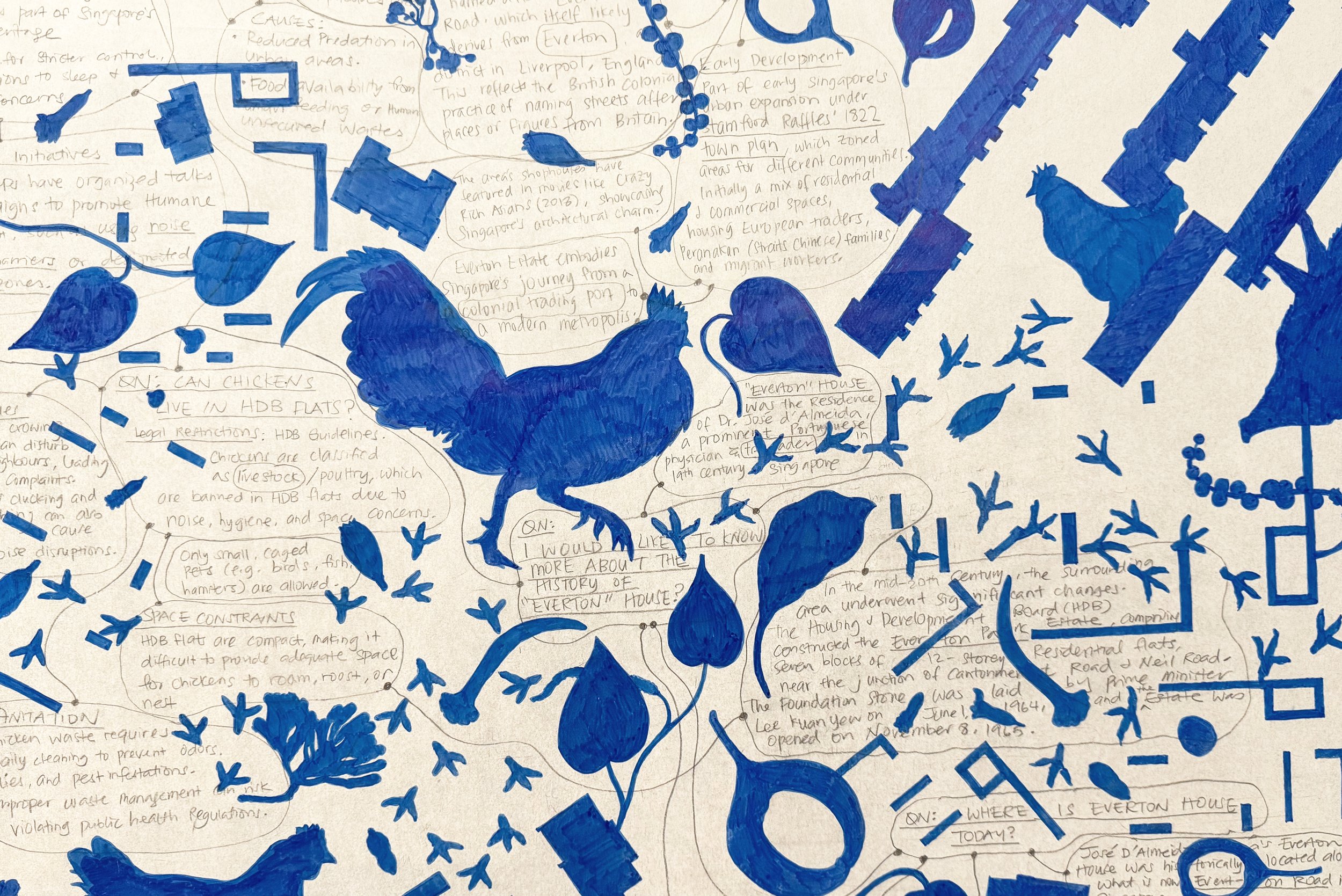
The Garden at Everton House
Pen ink and pencil on tracing paper, 4250mm (l) X 2200mm (h).
A creative response to the art installations and the artist-initiated and public engagement programs of/around the Singapore Art Museum’s Port/raits of Tanjong Pagar, at the closure of the public art trail, by Wong Zihao and Liu Diancong, March 2025.
The SAM’s Everyday Museum hosted a special showcase to commemorate two years of exploration, dialogue, and reflections, and Superlative Futures was asked to respond and map the conceptual themes that had emerged from the art trail.
What connects nutmegs, nature walks, ports, estate chickens, psychogeography, island views, caricature figures, tree (or plant or animal) spotting, map drawing, and slowing down? In The Garden at Everton House, Zihao Wong and Diancong Liu (of Superlative Futures), converse with the data “port/al” of the internet—a virtual “port”’ connecting knowledges across space and time—about the art installations and the artist-initiated and public engagement programs of, and around, the Everyday Museum’s Port/raits of Tanjong Pagar. The artwork takes the form of a conversational map interweaving multiple dialogues that Wong and Liu imagine having with the artists, collectives, and program collaborators, of the art trail—at its closing.
Conceptualized in 3 drawing “chapters”, the conversational map begins with the deceitful nutmeg, and eventually wayfinding (in rather unexpected ways) across a meandering landscape of what seem like unrelated prompts to locate the long-lost Everton House, and its spice garden. The first chapter expands a geographical portrait of the nutmeg landscape as part of wider port histories in 19th century Singapore; the next chapter follows on by assembling a semi-fictional yet semi-factual portrait of one resident: a spice merchant who lived near the Tanjong Pagar Port in the 1820s-50s. The third chapter unravels a speculative portrait of the residence—the elusive and long-demolished Everton House, charting the house’s spice garden and its relationship to the surrounding pre-harbourside landscape.
The conversational map eventually brings us to the tidal mangroves, a mangled landscape where forest and sea, and human and more-than human worlds come together as nature-culture entanglements. Like the port where people, materials, goods, cultures, ideas, plants, and animals, converge and diverge, we arrive at the mangrove—these liminal margins of perpetual transition and exchange where imagination happens. The authors of this work wonder aloud the close proximities between ports and mangroves, and the knowledge excesses that their maps construct for the landscape.










